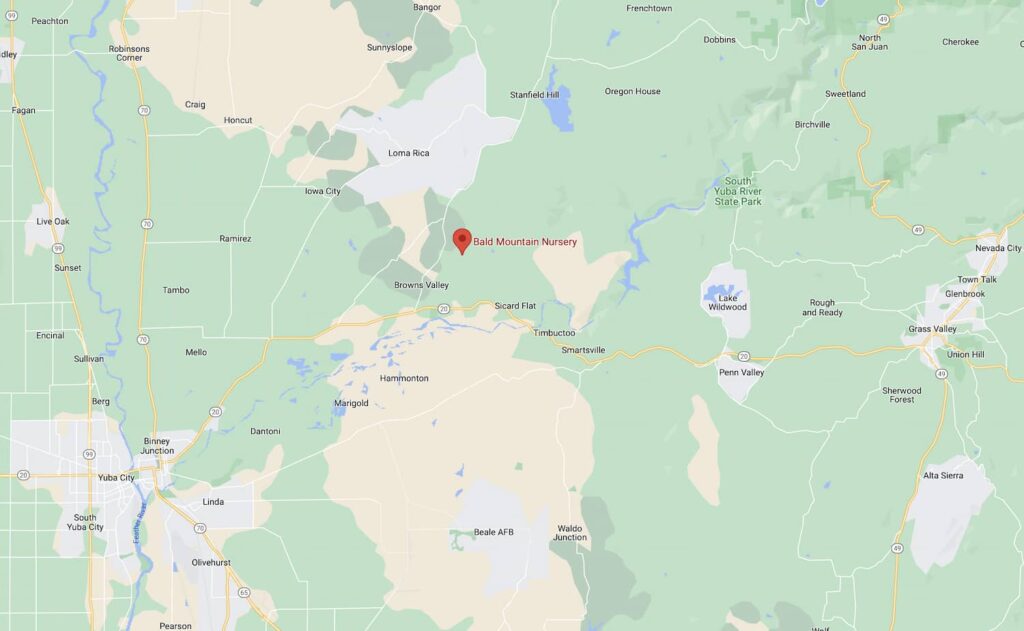Well, other than a few warm days, April is turning out to be a very nice month weather. As I write this, the forecast for next week at this point is calling for rain on Monday and a chance of rain later in the week. Hopefully “they” are right and it comes to pass.
We have a large selection of vegetable starts and more coming on in our greenhouse, plus regular deliveries, so we will have a good selection of vegetables for the planting season. This month is usually a good time to get started with the vegetable garden. Get it prepped if you haven’t done that yet so you can plant your vegetable starts soon. I always use Bio-Live fertilizer and bone meal and kelp meal mixed in the soil before I plant. Bone meal adds calcium to prevent blossom end rot. Kelp meal helps with disease prevention. After you have your plants in, use straw or mulch on the top to help keep the moisture in and keep the weeds down.
Many other things are needing to be done in the landscape during April.
Rhododendrons should have the flower trusses that are spent snapped off at the base as soon as they fade. Don’t wait until all the flowers have finished blooming to remove them because the plant will expend energy making seeds that would be better used to add new foliage when it has completed the bloom cycle. Fertilize them right after flowering with a rhododendron azalea camellia fertilizer now and then again in 30 days and a final time 30 days after that. The same treatment applies to azaleas when they are done blooming.
Daffodils that were blooming earlier are now done here at the nursery. After they are done blooming, don’t cut off the leaves while they are still green. While the leaves are green, fertilize them with a high phosphorous fertilizer or one labeled “bulb food”. The old leaves can be pulled up when they have turned yellow or brown.
If you haven’t fertilized yet, it is time to do it. With the cool temperatures, except for the past couple of days, it is an excellent time to fertilize your landscape. An all purpose fertilizer will work for trees and shrubs. Citrus fertilizer for citrus trees. And an acid fertilizer for rhododendrons, azaleas and camellias as well as blueberries. Be sure to water your plants well the day before you apply the fertilizer. Never fertilize a dry plant. Nitrogen part of fertilizer moves with water and if the plant is dry, it can pull up too much nitrogen when you water after applying the fertilizer and burn the plant. If it is moist and the fertilizer is applied and watered in, the plant pulls it up slowly since it is not thirsty.
Keep on top of the aphid problems and the fungus. Aphids seem to be quite a problem already this year. Spray with Neem oil or an insecticidal soap if you have aphids. Neem oil works as a fungicide too. Releasing lady bugs is another method to control the aphids. If you are going to use ladybugs, release them late in the evening, at dusk, and they will stay where you want them too.
I would recommend you start spraying your roses for fungus problems now before they appear. Use Neem oil or a fungicide on them on a regular basis to prevent the fungus from getting started. Neem oil will also act as an insecticide and prevent the aphid problem. We are starting to spray weekly here.
If you planted any bare root fruit trees this year or last year, the trunks of the trees should be painted with white tree trunk paint so that the young, thin bark does not become sunburned and cracked allowing insects to damage the cambium layer which carries nutrients to all parts of the tree. Do not use an oil based paint. A light colored, water based latex paint diluted by 50% works well.
Lawns should be fertilized with a lawn food, which will be high in nitrogen. You may want to over seed your lawn area to thicken it up a bit, and that can be done as long as your fertilizer does not have a weed control incorporated in the formula which would keep seed from sprouting. It is also a good time for starting a new lawn – before the weather heats up making it difficult to keep the area adequately dampened without having to sprinkle it every couple of hours or so. The same would apply to planting ground covers from flats – now is the time.
Lawns will do better if the mower blades are raised so that they are at least two inches high. Closely cut lawns don’t create much shade to the ground allowing it to dry much more quickly. That, in turn, requires more frequent and longer irrigating cycles for the lawn to stay nice and green. This will help to conserve water.
Summer annuals that provide reliable color through the summer will be becoming more available soon. Marigolds, alyssum, petunias, and other summer annuals will be coming in regularly soon. As the season progresses, they will be more plentiful
Hopefully you can get out and enjoy the nice weather in the garden
Thank you all for your continued support and we hope to see you soon.
Jeff

